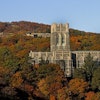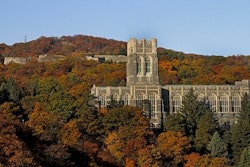Universities across the country are reassessing security strategies in the aftermath of the deadliest mass shooting in U.S. history at Virginia Tech in Blacksburg, Va., where 33 students and faculty were killed Monday during the nation’s deadliest shooting spree. Police have identified the shooter as 23-year-old Cho Seung-Hui, a senior from South Korea who majored in English. He committed suicide after the attacks.
Security policies changed immediately at the mostly gated campus of Hampton University. “We used to check licenses and IDs upon entering the campus from 9 to 5, now it’s in place 24 hours,” says Yuri Rodgers Milligan, director of university relations at the historically Black Virginia school.
Milligan says the students are holding a vigil to honor the victims and their families. “The students were shocked that it could happen at a university,” she says. “Their hearts go out to the students, especially being a university so near by.”
Smaller colleges, like Saginaw Chippewa Tribal College in Mount Pleasant, Mich., are keeping a watchful eye out for anything unusual.
“We’re pretty small and know all of our students,” says president Karen Radell. “If somebody showed up, we would call the tribal police. I don’t think we should start locking the doors or have it run like a military base. It wouldn’t keep out the people who really are determined to harm somebody. I don’t see us making changes, but we might become more vigilant.”
One of the most daunting tasks faced by universities throughout the country is in providing security in an open-campus environment — and often with large acre grounds and multi-building complexes.
Prior to the shootings at Virginia Tech, the deadliest campus shooting on record was in 1966 at the University of Texas at Austin, where a sniper opened fire killing 16 people and wounded 31 others.
At Vanderbilt University, chancellor Gordon Gee formed the Task Force on Safety and Security in response to a number of issues on the campus during the 2005-2006 academic year. Among the incidents was a shooting in a residence hall and a number of assaults against women. The task force included representatives from diverse constituencies on the campus, and focused on six areas of concern: alcohol, external influences, Greek life, residential areas, Student Services and Education, and women’s safety.
Recommendations included an aggressive stance on underage drinking, tightening visitor policies, developing a security plan for residence halls, overhauling orientation for first-year students and establishing clear sanctions for violating regulations.
In addition to updating their security and emergency response plans, colleges are also looking at ways to quickly alert students to problems on campus.
The University of Florida is working with local police to place automatic calls to campus telephones with similar kinds of messages, including alerts about hurricanes and tornadoes. And the University of Cincinnati has gone as far as making its public address system audible inside buildings.
“There is no one magic communication system that we can press a button and let everyone know what is going on,” says Chris Meyer, assistant vice president for safety and security at Texas A&M University, where they use all of the above methods and others.
Getting word out to students also was the plan at Virginia Tech, where officials have been working on a system that would get emergency alerts to students via text messages on their cell phones.
That system was not in place Monday. Some students said their first notice of trouble came in an e-mail at 9:26 a.m., after the second shooting had begun.
As Virginia Tech attempts to heal and regroup, the campus Web site serves as a tool to communicate with students and parents regarding the tragedy. The site features, among other things, a podcast statement from university president Charles Steger, a timeline of the events, information lines for parents, a police tip line and information about planned vigils and the cancellation of classes.
— The Associated Press contributed to this story.
There are currently 0 comments on this story.
Click here to post a comment.
© Copyright 2005 by DiverseEducation.com


















